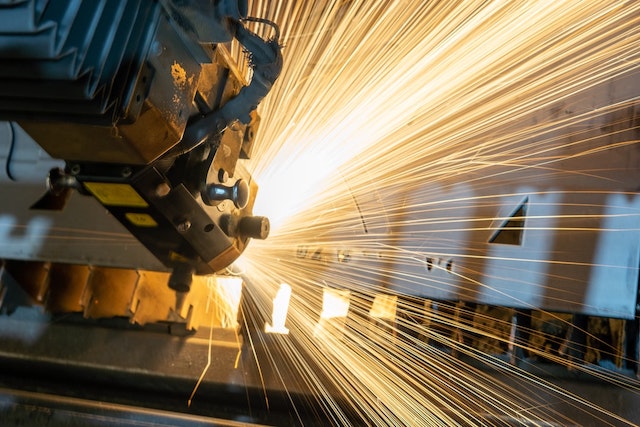
ABS material was one of the first plastic materials used in various industrial applications. Different companies can use it in the automotive industry, the electric industry, and more. It is particularly popularly applied in ABS prototyping based on its mechanical properties and affordability. Using ABS material in a rapid prototyping environment is not as straightforward as it sounds. Please continue reading below to learn more about rapid ABS prototyping, the different grades, and their applications. We will cover all you need to know about ABS material and who you can contact for more information.
ABS is an acronym for Acrylonitrile Butadiene Styrene, a thermoplastic known for its impact resistance and other properties. This material comprises three monomers, acrylonitrile, styrene, and butadiene.
ABS is excellent for structural applications because of its mechanical properties. It has high opposition to dilute alkalis and acid and has moderate resistance to aliphatic hydrocarbons.
Additional essential properties of ABS:
ABS material is excellent for rapid prototyping because of its strength and flexibility. It also has excellent wear and impact resistance, making it suitable for machining products in rapid prototyping.
ABS materials were made to replace polystyrene because they had low impact resistance. Today, ABS materials are commonly used for prototype manufacturing and in the manufacturing process in general. A large part of the materials components is produced using traditional methods, such as injection molding.
Although ABS material has its advantages, there are a few disadvantages to consider. For example, when used during the 3D printing process, the material may warp, crack, or curl, leading to failure when printing.
ABS is a complex material to print, and to ensure success when using it; you must use several features known by professional design teams. So unless you have someone who knows how to use ABS, the process won’t produce desired results.
In ABS plastic prototyping, there are several different grades of ABS. Each of these materials has its own properties that can significantly affect the result of your project.
One of the most common grades of ABS material is ABS extrusion grade. This type of grade has unique mechanical properties, making it excellent for ABS plastic prototyping. Extrusion grade is very elastic and strong, making it particularly useful in intense mechanical properties applications.
Another common grade of ABS for rapid prototyping with ABS is injection molding grade. Different categories of ABS injection molds are based on their impact resistance. The common subgrades used for rapid prototyping include medium impact, heat resistance, and high impact.
ABS flame retardant grade material has unique mechanical properties, but many people use them for its strong heat resistance capabilities. If needed, you can combine this material with other materials such as PC or PVC, and they are also subjected to extrusion or injection molding.
ABS prototyping is the most popular prototype-making step because it is a good material suitable for new product development and design. This type of material is mainly used because it has enough strength to withstand the prototype manufacturing process.
Processes ABS prototyping material can withstand:
Most experienced engineers prefer to work with ABS because of how easy it is to work with than other materials. Compared to plastic materials, ABS plastic prototyping can occur in different steps.
For example, CNC machining is compatible with ABS material through extrusion, but it is also compatible with other techniques. Extrusion passes ABS material through a specific shape of a die. The polymers are applicable in liquid transfer liquid pipes and pipelines following this procedure.
Because of the low temperature of extrusion, these materials are appropriate in cold areas. Other CNC machining processes include cutting, drilling, and turning.
Various companies use ABS prototyping due to its heat resistance, strength, and other viable reasons. For example, they need materials that can go through incredibly stringent requirements in the automotive industry.
They must be steady dimensionally and not distort or move when under extreme stress. This is where ABS shines; it has all those properties needed to create the exterior and interior of a vehicle.
Materials that are easy to maintain, waterproof, and wear-resistant are essential in the electrical industry. ABS has fantastic antistatic properties that are advantageous in an electrical setting. ABS also contains excellent electrical insulation characteristics, making it a perfect choice for electric part casing and housing.
To choose the right material for your project needs, you must understand the prototyping process you want to use and the properties of the ABS material. Before you begin your prototyping process, make sure you look at each grade of ABS. If you want your product to have high resistance to heat, you will want to look into ABS shot molding grade.
Another critical factor to keep in mind is machinability. Each grade has its own machinability coefficient. This means that if you use the wrong ABS plastic, you will be left with manufacturing problems. For example, using the wrong plastic for 3D printing can lead to warping issues.
ABS material is an essential product for ABS prototyping in various applications. To use this material effectively in any prototyping process, it is imperative to understand the ABS’s grades, prototyping process, and its use.
Contact us now if you are currently looking for a manufacturer to help you with your ABS prototyping needs. We are here to answer any questions or concerns you have about the different uses, grades, and prototyping processes used for each ABS material.